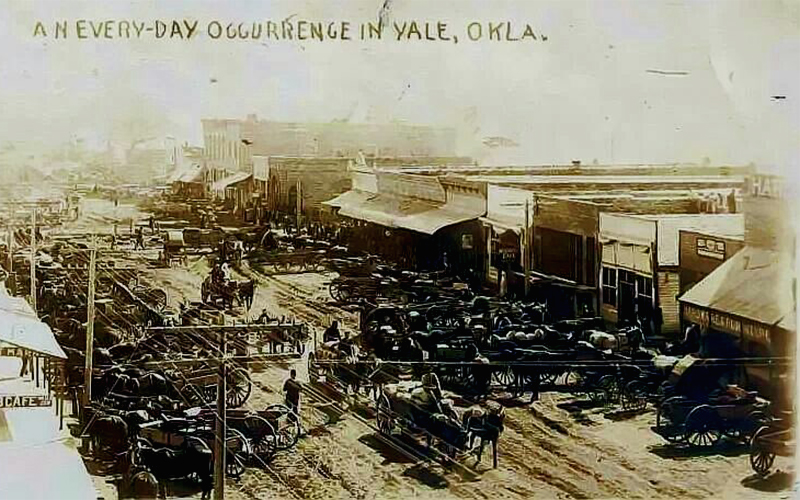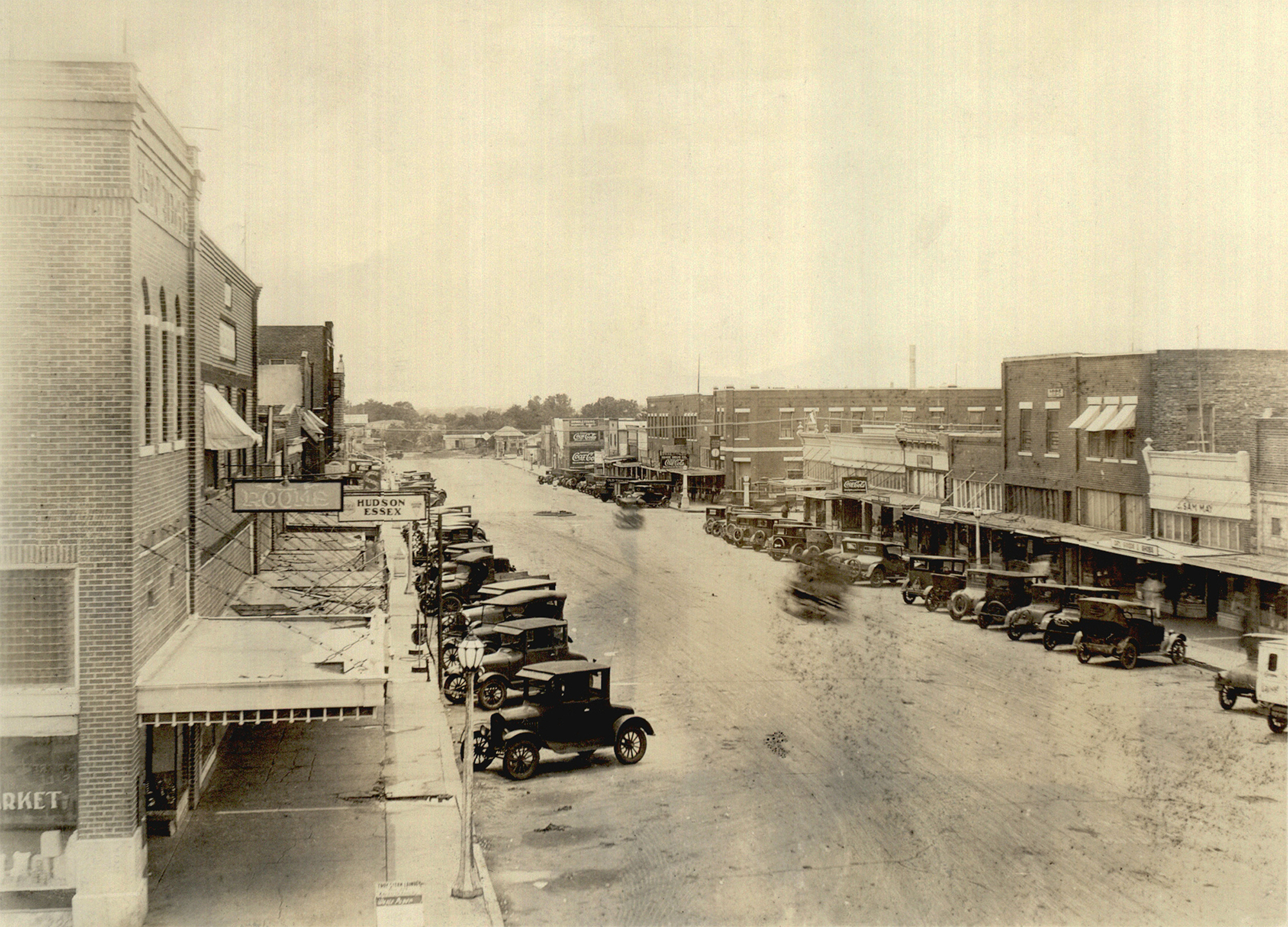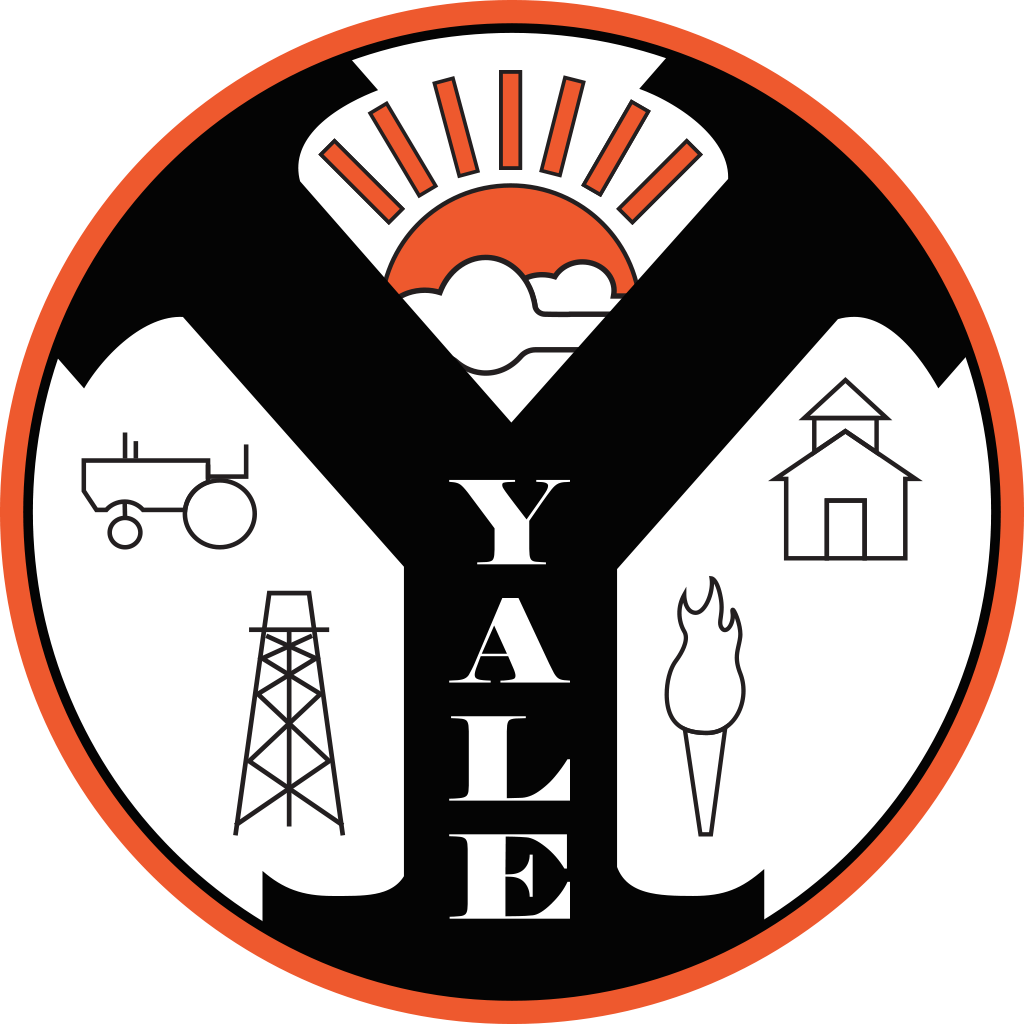History of Yale
Yale, Oklahoma is located in Payne County on State Highway 51, twenty miles east of Stillwater and forty three miles west of Tulsa. It was founded in 1895 on what was previously Pawnee Reservation land. The original town was one and a half miles east of the current location of the town when Sterling F. Underwood set up a post office in his general store on October 4, 1895. A couple of theories for the origin of the name Yale are that it was named after a lock in Underwood’s general store, or promoted by a traveling salesman from Yale, Iowa.
George W. Canfield set up a second town site on land they thought would be on the Eastern Oklahoma Railway’s route. In 1902 the railroad began service there. The town site grew with a public land auction on August 1 and 2 of 1902. Underwood moved his store and post office to the new location, which became the permanent site of Yale. By 1910 Yale, with 685 people, was an agricultural-service and cotton-processing center for the region.
This quiet farming community changed after September 23, 1913, when an oil well on the Ame Randle farm became a gusher. Then on October 24, 1913 came an even greater discovery as oil began gushing more than two hundred barrels an hour on the Sarah Rector farm. Rector was a ten-year-old African American orphan whose income soon reached $1,100 per month. Explorers from the Cushing-Drumright Field and other areas rushed to the community. As more discoveries occurred, twenty oil companies were operating in the Yale Field. By the end of 1914 the combined Yale and Cushing fields were reportedly producing 220,000 barrels a day. By February 1915 twenty-two million barrels of oil were reported in storage in the Yale Field, and fourteen refineries operated.
The town bloomed with houses and business sprouting up in Yale. By 1915 there were seven lumberyards, two hotels, three banks, three theaters, and many retail stores. Population estimates ranged from 6,000 to 10,000 for the entire field. The 1920 census indicated that Yale's population had officially reached 2,601. It would not last.


In 1915, after the initial boom, oil production began dropping by about 100,000 barrels per day, and more dry holes were reported. As the decline continued, oil prices dropped to as low as twenty-five cents and sometimes to sixteen cents per barrel. By 1921 major producers began to shut down or drastically cut back their operations. Explorers moved to new fields. Pioneer retailers also began to depart. The population decreased to 1,734 in 1930 and to 1,407 in 1940.
As of 2010, Yale has a population of 1,227. We currently host six churches, four restaurants, one grocery store, two gas stations, a tag agency, an apparel outfitter, and one weekly newspaper. Just outside of Yale is a smoke shop and casino. As an Oklahoma Historical Society affiliate historic site, the Jim Thorpe House, once home of Oklahoma-born Olympic champion Jim Thorpe, was listed in the National Register of Historic Places in 1971. American jazz trumpeter, flugelhornist and vocalist Chet Baker was born in Yale in 1929.
Special thanks to the OSU digital library
